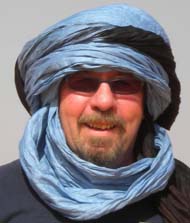Public Lecture: Update on SKA

Prof. Claude Carignan, an SKA SARCHI Chair based at UCT will give an “Update on SKA” on Saturday, July 28 at 20h00. This is a free lecture hosted by S.A. Astronomical Observatory. During his talk, he will highlight the three phases detailing how the Square Kilometre Array (SKA) project will be realised.
On May 25, it was officially announced that South Africa had won the bid to build the largest radio telescope ever built: the Square Kilometre Array (SKA). Most of the telescopes (~80%) will be built in South Africa, while the rest will be built by the other biding country, Australia. This sends a very strong message about the continent: Africa is now ready to compete with the world and realise big projects. On the other hand, it is a motivation to the younger generation to study science and stay in Africa to do research.
The SKA project will be realised in three phases
Phase One: the construction of the first prototype, Karoo Array Telescope 7 (KAT-7 dishes) was completed in December 2010 and is already in operation.
Phase Two: the construction of MeerKAT (64 dishes) or SKA-phase 1, will be completed in 2016. Already, five years of observation time has been granted to ten projects, of which five will be led by South African astronomers.
Phase Three: the full SKA (over 3000 dishes) will be completed in 2025. Two-thirds of the dishes will be concentrated in the Karoo desert 80 km from Carnarvon, while the others will extend all the way to eight other African countries, partners of the SKA (Mozambique, Zambia, Mauritius, Madagascar, Ghana, Kenya, Botswana and Namibia).
Bio:
Prof. Claude Carignan is an expert on galaxy dynamics and dark matter. Subsequent to accepting the SKA SARCHI Chair position at UCT, he was working at the University of Montreal in Canada. He has also been very involved in the development of Astronomy in Burkina Faso and in the setting up of the African Astronomical Society (AfAS). Prof. Carignan specialises in the study of mass distribution in galaxies, using both radio synthesis and optical Fabry-Perot interferometric techniques.
